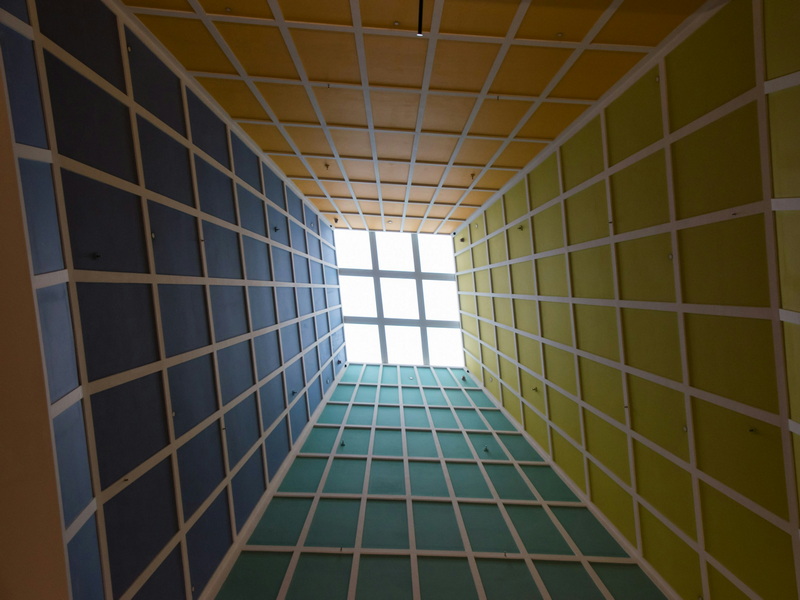English 




Views: 222 Author: Astin Publish Time: 2025-02-20 Origin: Site



Content Menu
● Understanding the Properties of Aluminum Foil
● Benefits of Using Aluminum Foil on Windows
>> Heat Insulation and Reflection
>> Privacy and Glare Reduction
● Best Practices for Applying Aluminum Foil
● Additional Applications of Aluminum Foil on Windows
>> Protection Against Natural Disasters
>> DIY Projects
● Safety Considerations When Using Aluminum Foil
>> Health Risks
● FAQ
>> 1. Does aluminum foil really keep heat out?
>> 2. Can I use regular kitchen-grade aluminum foil?
>> 3. Will using aluminum foil damage my windows?
>> 4. How long can I leave aluminum foil on my windows?
>> 5. Are there alternatives to aluminum foil for window insulation?
Aluminum foil is a versatile household item that has found its way into many unconventional uses, one of which is its application on windows. This article explores the reasons behind putting aluminum foil on windows, examining its benefits, practical applications, and safety considerations.
Aluminum foil is a thin sheet made from aluminum metal, known for its excellent reflective properties. These properties make it an effective barrier against heat transfer. When used on windows, aluminum foil can reflect a significant portion of radiant heat, making it a useful tool for temperature regulation in homes.

One of the primary reasons homeowners apply aluminum foil to their windows is for insulation against heat. During hot weather, sunlight entering through windows can raise indoor temperatures considerably. By applying aluminum foil to the exterior of windows, homeowners can reflect sunlight away from the glass surface, preventing heat from entering the home. This not only keeps indoor spaces cooler but also reduces reliance on air conditioning systems, leading to lower energy bills. Studies indicate that aluminum foil can reflect approximately 90-96% of radiant heat, making it an effective solution for both summer and winter months.
Compared to specialized window films or treatments, aluminum foil is a cost-effective alternative for improving energy efficiency. A roll of aluminum foil is inexpensive and widely available, making it accessible for most homeowners looking to manage indoor temperatures without incurring significant costs.
Aluminum foil also serves as a privacy barrier when applied to windows. It effectively blocks visibility from outside while allowing some light to filter through. Additionally, it helps reduce glare caused by direct sunlight streaming into homes, making it particularly useful in rooms where glare can be disruptive.
Another advantage of using aluminum foil on windows is its ability to block harmful ultraviolet (UV) rays from the sun. Prolonged exposure to UV rays can damage furniture and flooring inside the home; thus, aluminum foil can help protect these items by reducing UV penetration.
To maximize the effectiveness of aluminum foil on windows, consider the following best practices:
Placement: For optimal results, place aluminum foil on the exterior side of windows rather than the interior. This placement allows for better reflection of solar heat before it enters the home and prevents heat buildup between the glass and the foil.
Material Choice: Regular kitchen-grade aluminum foil may not provide adequate insulation over time. Instead, opt for heavy-duty or thicker varieties that offer better durability and insulation properties against outdoor elements.
Using Cardboard: For improved insulation performance, consider placing cardboard behind the aluminum foil. This creates an air gap that enhances thermal resistance while protecting the glass from excessive heat.
Securing Edges: Use tape or adhesive specifically designed for metal surfaces to secure the edges of the aluminum foil. Ensure that there are no gaps where light can enter; this will enhance both insulation and privacy.

In addition to its primary benefits, aluminum foil has several other applications worth considering:
In situations where natural disasters such as hurricanes or severe storms are anticipated, covering windows with aluminum foil can provide an extra layer of protection against flying debris. The foil acts as a barrier that can help prevent shattering glass from causing injury or damage inside your home.
Aluminum foil can also be utilized in various crafts or DIY projects related to window decoration or functionality. For example, combining aluminum foil with other materials such as fabric or paper can create unique decorative window coverings while still benefiting from its reflective properties.
Homeowners may desire softer lighting in certain rooms without blocking out all natural light completely. By crumpling aluminum foil and placing it behind sheer curtains or window screens, you can diffuse sunlight effectively while still maintaining brightness in your living space.
Using aluminum foil on windows also has environmental implications worth discussing. With rising concerns about energy consumption and climate change, finding ways to reduce energy use in homes has become increasingly important. By reflecting sunlight and reducing reliance on air conditioning systems during hot months, homeowners contribute positively towards energy conservation efforts.
Moreover, using aluminum foil as a temporary solution reduces waste associated with purchasing new window treatments or films designed specifically for insulation purposes. It encourages recycling practices since many people tend to discard items like old curtains or shades after only a few years of use while opting instead for an easily recyclable material like aluminum.
While utilizing aluminum foil offers numerous advantages, safety considerations must be prioritized during application processes:
Although aluminum itself poses minimal health risks when used appropriately, caution must be exercised regarding direct contact between food items and uncoated surfaces made solely from this material (especially acidic foods). Studies suggest potential leaching occurs under certain conditions; hence experts recommend opting for non-reactive alternatives like parchment paper whenever possible during extended cooking periods involving high temperatures.
Improper installation could lead to thermal stress issues resulting in shattered glass panes over time. Regular monitoring becomes essential to ensure no excessive buildup occurs between layers created by applying aluminum foils onto surfaces directly adjacent without proper ventilation pathways established beforehand.
While functionality is essential when applying aluminum foil on windows, aesthetics should not be overlooked either. Many homeowners may find that shiny silver sheets do not match their interior design preferences or may clash with existing decor themes within their homes. To address this concern:
Consider using decorative window films designed specifically for aesthetic appeal while still providing similar benefits as those offered by traditional foils; these films come in various patterns and colors that can enhance rather than detract from your home's overall appearance.
If you prefer sticking with standard foils but want them to blend better into your decor scheme—try painting them with non-toxic spray paint after installation; this allows you to customize colors according to personal tastes without sacrificing performance!
In summary, using aluminum foil on windows serves multiple functions: effective heat insulation, cost savings on energy bills, privacy enhancement, glare reduction, UV protection are just some benefits worth noting. While it presents some aesthetic challenges and potential risks regarding glass damage if improperly used, its advantages make it a viable option for many homeowners seeking quick and inexpensive ways to manage indoor temperatures. As with any home improvement strategy, it's essential to consider both advantages and disadvantages before implementing changes.

Yes! Aluminum foil reflects sunlight away from your home during summer months while retaining indoor heat during winter months, making it effective for temperature regulation.
While regular kitchen-grade aluminum foil can be used, heavy-duty or thicker varieties are recommended for better durability and insulation properties.
If applied correctly and monitored regularly for thermal buildup, using aluminum foil should not damage your windows.
Aluminum foil can remain on windows as long as needed; however, regular checks are advisable to prevent any potential issues with thermal stress.
Yes, there are specialized reflective films designed specifically for window insulation that can be more aesthetically pleasing while providing similar benefits.
[1] https://www.weiye-aluminium.com/what-does-aluminum-foil-do-on-windows.html
[2] https://gist.github.com/allenfrostline/c6a18277370311e74899424aabb82297
[3] https://www.housedigest.com/1346117/aluminum-foil-hack-cover-windows-heat/
[4] https://learn.microsoft.com/zh-cn/style-guide/scannable-content/headings
[5] https://www.tomsguide.com/opinion/i-just-beat-the-heat-with-a-dollar2-roll-of-aluminum-foil-heres-how
[6] https://jphe.amegroups.org/article/view/4265/10863
[7] https://www.reddit.com/r/DIY/comments/14xf1nx/would_it_be_bad_if_i_covered_my_window_with/
[8] https://b3logfile.com/pdf/article/1653485885581.pdf
Top Aluminum Furnitures Manufacturers and Suppliers in Czech Republic
Top Aluminum Furnitures Manufacturers and Suppliers in Poland
Top Aluminum Furnitures Manufacturers and Suppliers in Belgium
Top Aluminum Furnitures Manufacturers and Suppliers in Finland
Top Aluminum Furnitures Manufacturers and Suppliers in Denmark
Top Aluminum Furnitures Manufacturers and Suppliers in Greece
Top Aluminum Furnitures Manufacturers and Suppliers in Portugal
Top Aluminum Furnitures Manufacturers and Suppliers in Austria
Top Aluminum Furnitures Manufacturers and Suppliers in Norway
Top Aluminum Furnitures Manufacturers and Suppliers in Sweden
